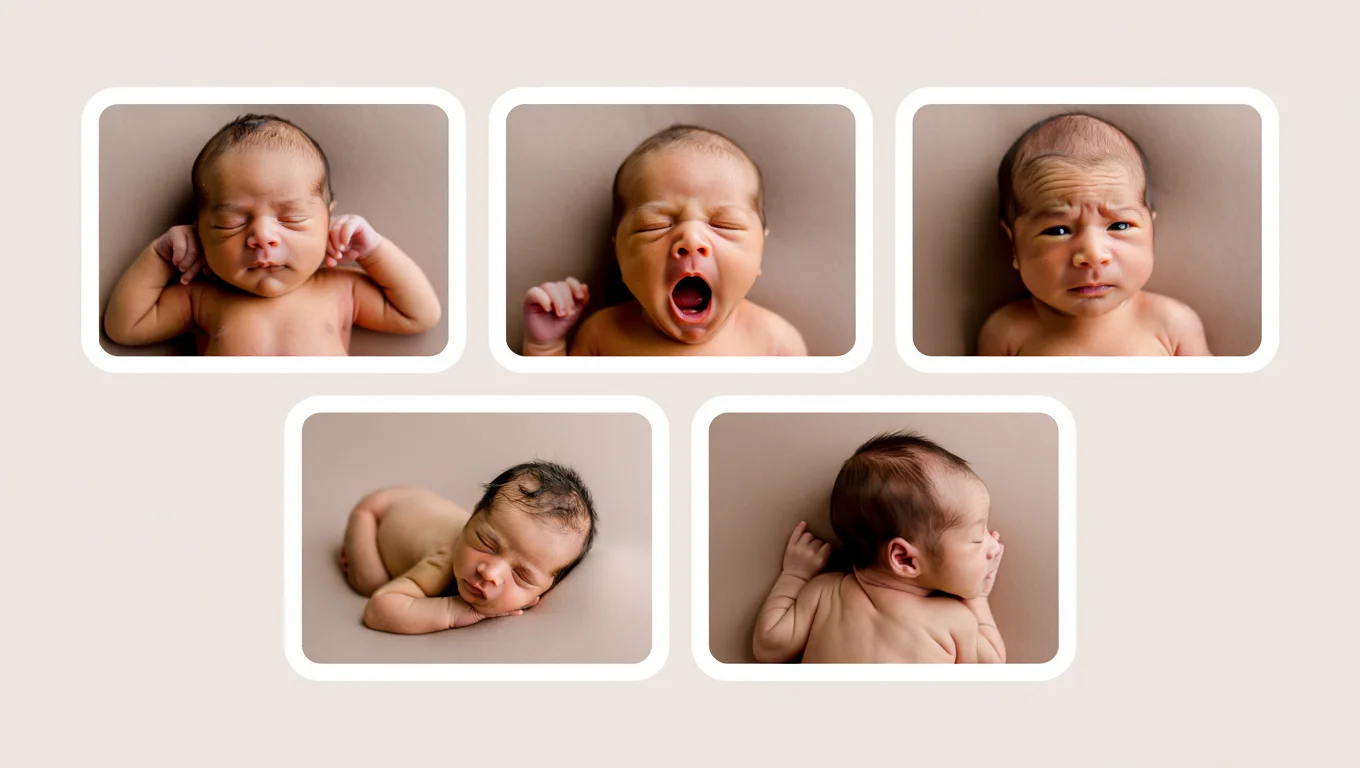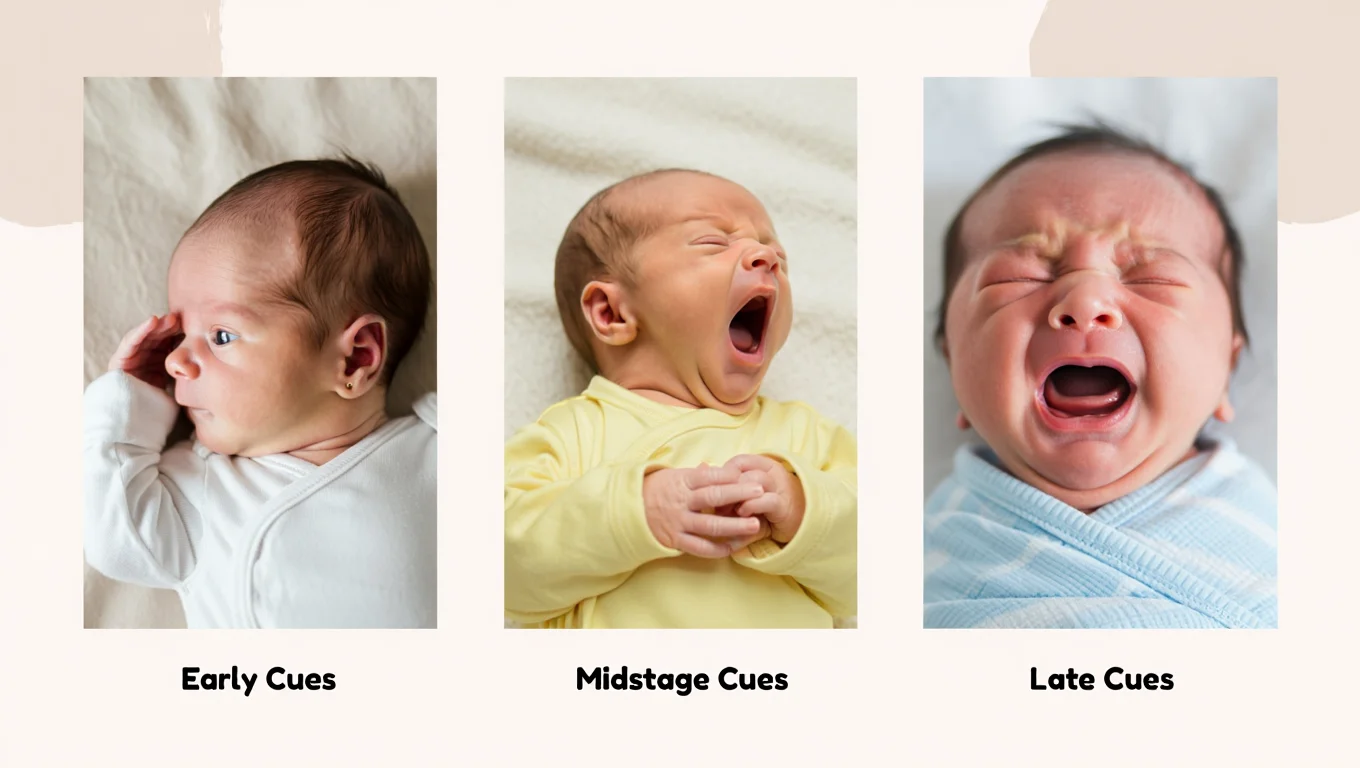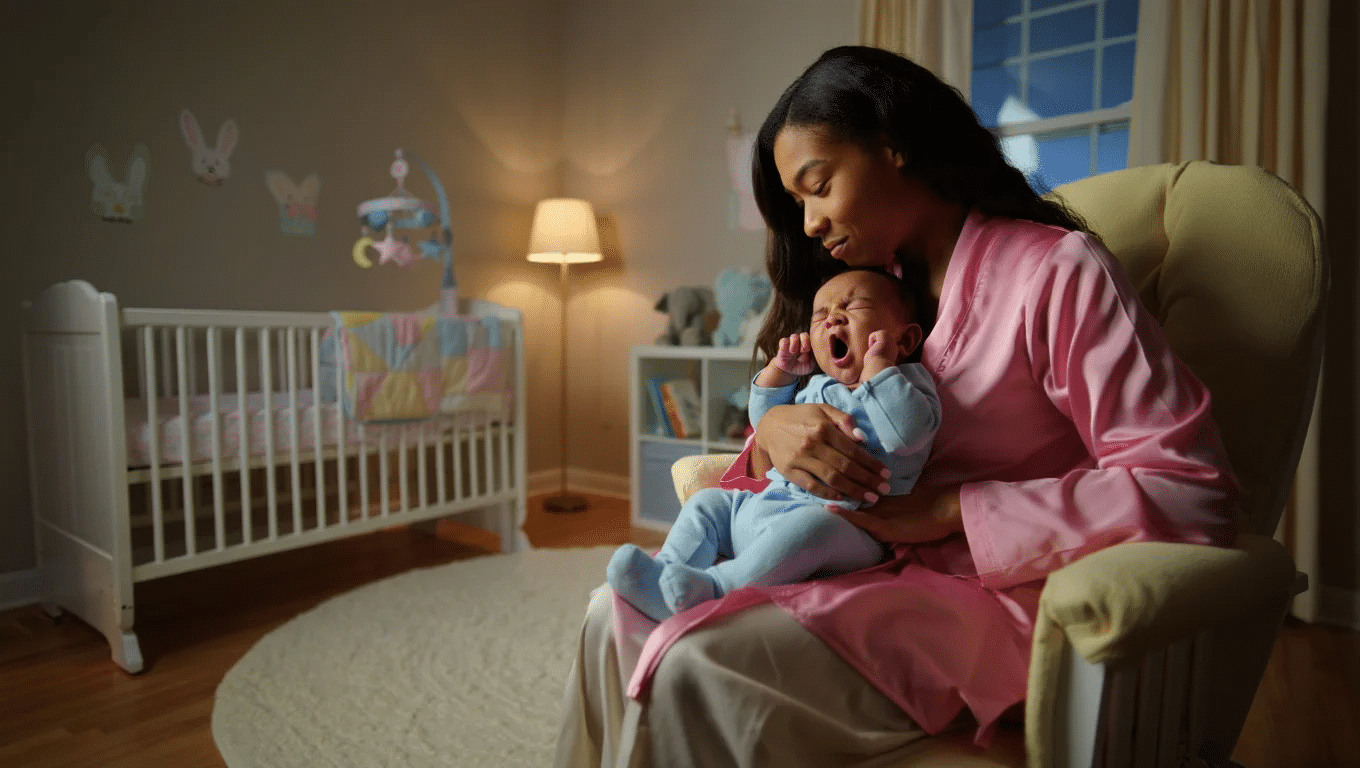
Welcome to the world of parenthood! As a new mom or dad, figuring out your baby’s needs can feel like solving a puzzle.
One important piece of this puzzle is understanding when your little one is ready for sleep. Babies can’t tell parents they’re tired with words, but they do communicate through special signals called sleepy cues.
These subtle signs are your baby’s way of saying, “I’m getting sleepy!“ Learning to read these cues takes time, but it becomes easier with practice.
Each baby has their own unique sleep patterns and signals, making this an exciting part of learning for parents. When you understand these signals, bedtime battles become much less common.
When you know about these cues, you’ll learn how to create a perfect sleep routine based on your baby’s unique cues and achieve a good night’s sleep!
Understanding Baby Sleep Cues
Babies can’t tell us when they’re tired, but they show us through their behavior. Watch for eye rubbing, ear pulling, and yawning – these are classic signs your little one needs sleep. Fussiness and decreased activity often mean your baby is overtired.
Most newborns need sleep every 45-60 minutes, while older babies can stay awake longer. Instead of following strict schedules, pay attention to your baby’s unique patterns.
When you notice these sleep cues, start your bedtime routine immediately. Waiting too long can lead to an overtired baby who fights sleep. A consistent response to these signals helps your baby develop healthy sleep habits.
Remember, each baby is different – what works for one might not work for another.
The Importance of Recognizing Your Baby’s Tired Signs

Spotting a baby’s sleepy cues is key to helping them get good sleep.
When babies are put to bed at the right time—when they’re tired but not overtired—they fall asleep more easily and sleep better.
This leads to happier, well-rested babies and more peaceful nights for parents. Regular, good-quality sleep is also important for babies’ brain development, growth, and overall health.
By learning a baby’s unique sleep language, parents can help build healthy sleep habits that will benefit their little ones for years to come.
What to Do When You Miss the Sleepy Window?
Missing sleepy cues happens to everyone. When babies get overtired, they become fussy or extra active. Try calming with gentle rocking, swaddling, soft singing, or white noise. Create a quiet, dim space or change scenery by going outside. With practice, spotting early cues becomes easier.
How to Identify When Your Newborn Is Ready for Sleep?

Learning to spot your baby’s sleepy cues takes a little practice, but it gets easier with time. Here are five common sleepy signs to watch for:
- Rubbing Eyes: When babies rub their eyes, it’s often one of the first signs they’re getting sleepy.
- Yawning: Just like adults, babies yawn when they’re tired. This is an easy cue to spot.
- Fussiness: A happy baby who suddenly becomes fussy or whiny might be saying, “I’m tired!”
- Decreased Activity: When normally active babies become still or quiet, they may be winding down for sleep.
- Looking Away: If your baby starts turning away from toys or people, it might be trying to reduce input because it’s tired.
Different Types of Sleep Cues

Every baby shows different types of sleep cues; some may yawn, while some may start crying. Here is some brief information to recognize what type of sleepy cue is.
1. Early Sleepy Cues
Yawning and eye rubbing are the first signs your baby needs sleep. They might also have quieter moments, stare blankly, or make slower movements.
These subtle signs appear when your baby is just beginning to feel tired.
2. Mid-Stage Sleepy Cues
Fussiness and ear-pulling indicate your baby is getting more tired. They may turn away from stimulation, show decreased activity, or make small whimpering sounds.
Your baby might also start to lose interest in toys or people around them.
3. Late Sleepy Cues
Crying, arching backwards, and clenched fists mean your baby is overtired.
Their movements become jerky, and they may fight sleep. Your baby might also rub their face against you or their bedding or show increased fussiness that’s hard to soothe.
Watching for these cues helps you put your baby down during their “sleep window” – before they become overtired and have trouble falling asleep.
Sleepy Cues vs Overtiredness: Solving the Confusion

Many parents often confuse newborn sleepy cues with signs of overtiredness, which can lead to missed nap windows and fussier babies. Here’s a quick table to help tell the difference:
| Sleepy Cues | Overtiredness |
|---|---|
| Yawning | Crying or fussiness |
| Staring off or looking away | Arching back |
| Slower movements | Clenched fists |
| Rubbing eyes or ears | Refusing to feed or settle |
| Mild fussing or whining | Jerky, flailing arms or legs |
| Losing interest in surroundings | Red eyebrows or eyelids |
| Quiet and still behavior | Difficulty falling or staying asleep |
Creating a Sleep Routine Based on Cues

Understanding your baby’s sleepy cues allows you to establish a smooth bedtime routine. When you notice your baby showing signs of tiredness, it’s the perfect time to start your sleep routine.
- Watch for eye rubbing or ear pulling – these are classic signs your baby is ready for sleep.
- Begin dimming lights and reducing noise when you spot yawning or decreased activity.
- Start your bedtime routine when your baby becomes fussy or less interested in toys.
- Use gentle rocking or swaying when you notice your baby’s eyes becoming heavy or glazed.
- When sleepy cues appear, implement a consistent bedtime ritual (like a quick massage, story, or lullaby).
- Move to the sleeping area immediately when you notice your baby turning away from stimulation.
Following these cues rather than the clock helps your baby develop healthy sleep associations.
Should You Consult a Pediatrician?

Most sleep issues in babies are normal and can be managed at home by following their natural cues. However, some situations require professional medical advice.
If you notice unusual sleep patterns or behaviors, talking to your pediatrician can help rule out any underlying issues.
When to Seek Medical Help?
- Your baby seems extremely tired all the time, even after sleeping
- Sleep patterns suddenly change dramatically with no clear reason
- Your baby stops gaining weight or shows poor feeding related to sleep
- You notice breathing pauses, loud snoring, or unusual movements during sleep
These signs might indicate a medical condition that needs attention. Remember that pediatricians have seen many babies with sleep challenges and can offer specific guidance for your situation.
Don’t hesitate to call if you’re worried about your baby’s sleep patterns.
The Bottom Line
Every baby has their unique sleep language, and learning to read your baby’s sleepy cues takes time and patience.
As you spend more time together, you’ll become the true expert on your baby’s needs. The small signs your baby shows before getting overtired are your best guide to timing naps and bedtime.
Trust your instincts when creating sleep routines—you know your baby better than anyone else.
With practice, responding to these early sleepy cues becomes second nature, creating a smoother sleep experience for both of you. Remember that sleep patterns change as your baby grows, so stay flexible and adjust your approach as needed.
If you’re interested in more informational content on mothers and babies, feel free toclick here and explore other blogs that you might enjoy.
